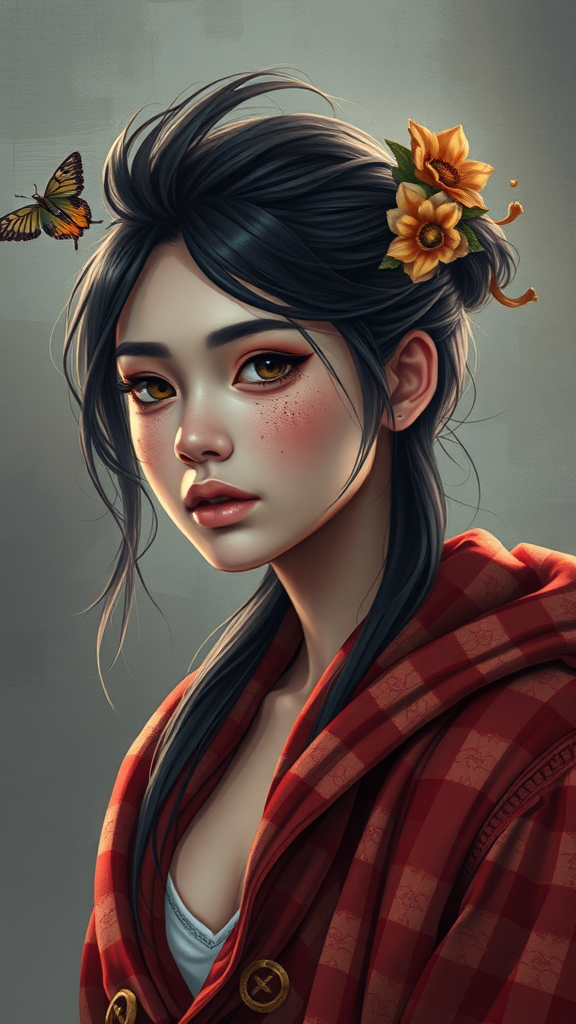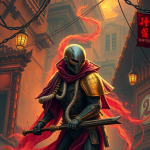The Intersection of AI Art and Copyright Law: Who Owns the Creation?
As artificial intelligence (AI) technologies advance, they are reshaping various sectors, including the art world. People are increasingly using AI to create art, sparking discussions about the complexities of copyright law. With these new tools, questions arise: Who holds the rights to an artwork generated by AI? Is it the programmer, the user, or the AI itself? Understanding the intersection of AI art and copyright law can help clarify these urgent issues.
The Role of AI in Art Creation
AI art often relies on algorithms to create images, music, or text that resemble what humans might produce. These algorithms analyze existing artworks, incorporating styles, themes, and techniques that they have ‘learned.’ This process raises the question of originality, a key component in copyright law.
Understanding Copyright Basics
Copyright is a legal framework that gives creators exclusive rights to their original work. It protects expressions of ideas but not the ideas themselves. In general, for a creation to be copyrighted, it needs to be:
- Original: The work must show some level of creativity or originality.
- Fixed in a Tangible Medium: The work must be captured in some form, such as on paper or a digital file.
- Human Authorship: Traditionally, copyright law has required that a human be the creator of the work.
A Closer Look at AI Art
When AI produces an artwork, it often does so based on an extensive database of existing works. The questions arise: Is the AI the creator, or is it the person who initiated the process? Many argue that AI lacks true creativity and merely remixes existing styles and elements. Others feel that since the user guides and selects the input for the AI, they should hold the rights to the output.
Who Holds the Copyright?
Currently, copyright laws vary by jurisdiction, but some common interpretations include:
Join our amazing AI and Automation Community
- The User: If a person provides inputs and receives an outcome that follows their creative intent, they may claim copyright. This argument hinges on the idea that the user plays a significant role in the art creation process.
- The Developer: Some experts argue that the software creators should hold rights over the art produced by their algorithms, especially if they embed unique styles or features into the AI.
- Public Domain: Works generated exclusively by AI without human contribution might not qualify for copyright protection. This means they could fall into the public domain, making them accessible for anyone to use.
Recent Legal Developments
As AI art gains popularity, lawmakers are beginning to address these ambiguities. Some cases are starting to set precedence:
- In 2020, an AI-generated artwork titled “Edmond de Belamy” was sold at auction, and the conversation around copyright intensified. Who owned that art piece remains a pivotal question.
- In 2021, the U.S. Copyright Office turned down an application for copyright on a purely AI-generated work, stating that copyright protection requires human authorship.
Ethical Considerations
Copyright law serves not only as a means to protect the creator but also to encourage creativity and innovation. As AI blurs the lines of authorship, ethical concerns also arise:
- Fair Use: How do we define fair use when an AI pulls from existing works? Does it infringe on the rights of original creators?
- Attribution: Should AI-generated art require attribution to the original sources it learned from?
- Impact on Artists: How will AI art affect traditional artists? Will it undermine or enhance their practice?
As the landscape of AI art and copyright continues to evolve, engaging in proactive discussions about these issues is vital. By understanding the rights associated with creations using AI, stakeholders can pave the way for a more balanced relationship between technology and art. The questions may not have straightforward answers yet, but as both AI and copyright law develop, so too will our understanding of who truly owns a piece of AI-generated art.
Ethical Implications of AI-Generated Art in the Creative Industry
The rise of AI-generated art is revolutionizing the creative industry. As technology advances, artists and audiences are curious about the boundaries of creativity. However, this innovation brings many ethical implications that provoke thoughtful discussions among creators, art enthusiasts, and legal experts.
One major issue is the question of authorship. When an AI program creates art, who holds the copyright? If a machine generates a piece independently or based on pre-existing human artwork, it raises complexities in ownership. Traditionally, copyright law protects the rights of human creators, but AI challenges this standard. You might wonder, can an algorithm that produces art be considered an artist?
Join our amazing AI and Automation Community
The debate intensifies when you consider the role of human input. Many AI-generated pieces are the result of algorithms trained on thousands, if not millions, of artworks. If an AI learns from existing works, is it merely remixing these creations, or is it creating something original? This leads to concerns about whether AI can infringe copyright laws when using styles, themes, or ideas from human-made art. You should reflect on how this affects original artists who pour time and effort into their craft, only to find their work used as fuel for an AI’s output.
Furthermore, AI-generated art complicates the dynamics of the art market. As galleries and auctions embrace AI art, they must consider its value compared to traditional artworks. Can a piece created by an AI carry the same emotional weight or artistic significance as one crafted by a human? This is a vital question for collectors and viewers alike. Investing in art is often as much about emotional connection as it is about monetary value. As such, the distinct nature of AI-generated art challenges traditional market practices.
Another ethical dimension is the use of AI art in commercial contexts. Many brands are hopping on the trend, utilizing AI-generated images in advertising campaigns and products. While this may drive costs down and make art more accessible, it poses risks. Are companies exploiting this technology without compensating the original creators who inspired their designs? This leads to a crucial point for consumers to consider: Are we supporting fair business practices by promoting and buying AI-generated art?
Additionally, there is a risk of devaluing human creativity. When consumers turn to AI-generated options, human artists may receive less recognition and compensation. You might have noticed a shift in how art is perceived—something that was once an expression of one’s humanity now may feel mechanical. If the public starts to favor AI art over human-made creations, what does this signal for aspiring artists and their careers?
Join our amazing AI and Automation Community
- Transparency: It’s essential for creators and consumers to understand the origins of AI art. Providing information about the data sources and inspiration behind AI-generated works can foster trust.
- Regulation: Legal frameworks may need updating to address the challenges posed by AI in art. Policymakers should engage with artists and technologists to draft balanced laws.
- Ethical Guidelines: The creative industry must establish ethical standards for the use of AI technologies in art. These guidelines would govern how AI is trained and how it interacts with existing works.
In considering these implications, several critical questions emerge. Should AI-generated art be considered a new genre, separate from traditional forms? Can it coexist with human creativity, or will it ultimately overshadow it? As a reader, pondering these questions encourages a deeper understanding of how technology is reshaping artistic expression.
The conversation around AI-generated art and its ethical implications is ongoing. As you explore this fascinating intersection of technology and creativity, keep in mind that the future scenarios can evolve rapidly. Engaging in discussions about these ethical concerns is essential. Whether as a consumer, artist, or enthusiast, your voice plays a vital role in shaping the future of art in a world where AI increasingly becomes a creative collaborator.
In this rapidly changing landscape, it’s crucial for everyone involved in the creative industry to keep questioning, evolving, and finding balance. By prioritizing ethical considerations, the integration of AI in art can lead to new forms of expression that respect both human creativity and technological advancements.
Conclusion
Navigating the complex landscape of AI art and copyright law reveals significant questions about ownership, creativity, and ethical standards within the creative industry. As AI-generated artwork becomes more prevalent, determining who holds the rights to these creations is more crucial than ever. This evolving situation calls for a reevaluation of existing copyright laws and a collaborative effort between artists, technologists, and legal experts.
The ethical implications surrounding AI-generated art also cannot be overlooked. Many traditional artists feel threatened by AI encroachment, raising concerns about the potential dilution of human creativity. It is essential for the creative community to engage in dialogues that promote understanding and foster coexistence between human artists and AI technologies. By encouraging transparency in the creation process and sharing credit, a healthier ecosystem can emerge—one that inspires innovation while respecting the rights and contributions of all creators.
Join our amazing AI and Automation Community
Ultimately, striking a balance between inspiration and ownership is key. As we advance further into this digital age, we need a framework that embraces the potential of AI-generated art while safeguarding the rights of original creators. This journey may not be straightforward, but it certainly offers an opportunity to redefine creativity in a manner that is respectful, inclusive, and forward-thinking. Engaging in this discourse will not only lead to better policies but also promote a rich tapestry of artistic expression that includes AI as a valuable tool, rather than a competitor.


